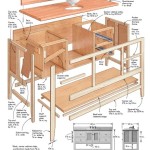Installing a Bathroom Sink Cabinet Floor: A Comprehensive Guide
The installation of a bathroom sink cabinet floor is a crucial step in ensuring the longevity and functionality of the cabinet itself, as well as protecting the underlying subfloor from potential water damage. The enclosed space beneath a bathroom sink is particularly susceptible to leaks and spills, which can lead to mold growth, wood rot, and structural damage if left unchecked. Consequently, installing a durable, moisture-resistant floor within the cabinet is a proactive measure that significantly reduces the risk of these issues. This guide outlines the process of installing a bathroom sink cabinet floor, covering the necessary preparations, material selection, installation steps, and essential considerations for a successful outcome.
The scope of this project can range from a simple, easily installed liner to a more involved project requiring custom cutting and fitting of materials to the cabinet's dimensions. The choice of method largely depends on the existing conditions of the cabinet, the desired level of protection, and the installer's skill level. Regardless of the approach taken, meticulous attention to detail and adherence to best practices are essential for achieving a waterproof and aesthetically pleasing result.
Key Preparations Before Installation
Before commencing the installation, a thorough assessment of the existing cabinet and its surroundings is paramount. This includes inspecting the cabinet's existing floor (if any) for signs of water damage, mold, or structural weakness. Any pre-existing issues must be addressed before proceeding with the new floor installation. This might involve removing the old flooring, treating mold with appropriate solutions, and reinforcing any weakened areas of the cabinet structure.
Next, accurate measurements of the cabinet's interior dimensions are crucial. Measure the width, depth, and height of the available space, taking into account any obstructions such as plumbing pipes, shut-off valves, or support structures. These measurements will dictate the size and shape of the flooring material that needs to be cut. A detailed sketch of the cabinet's interior, noting the position of these obstructions, can be extremely helpful in planning the layout and cuts.
Selecting the appropriate materials is another critical preparatory step. The material should be chosen for its moisture resistance, durability, and ease of installation. Popular options include: *
PVC sheeting:
A waterproof and relatively inexpensive option that can be easily cut and installed. It is highly resistant to water damage and mold growth. *Linoleum:
A natural and durable option that is water-resistant and available in a variety of colors and patterns. *Vinyl flooring (tiles or sheet):
A versatile option that offers good water resistance and is available in a wide range of styles and price points. *Waterproof plywood:
Plywood treated with waterproof sealant provides a stable and durable base. *Plastic or metal trays
: Designed specifically for under-sink protection, these can be a simple drop-in solution depending on dimension requirements.Finally, gather all the necessary tools and equipment. This typically includes a measuring tape, pencil, utility knife or saw (depending on the material chosen), safety glasses, gloves, a level, adhesive (if required), and a caulking gun with silicone caulk.
Step-by-Step Installation Process
With the preparations complete, the actual installation process can begin. The following steps provide a general guideline, but specific details may vary depending on the chosen material and the unique characteristics of the cabinet.
1.
Cleaning the Cabinet Interior:
Thoroughly clean the inside of the cabinet, removing any debris, dust, or grime. A clean surface is essential for proper adhesion if adhesive is being used. Use a vacuum cleaner to remove loose particles, followed by a damp cloth to wipe down the surfaces. Ensure the cabinet interior is completely dry before proceeding.2.
Cutting the Flooring Material:
Based on the previously taken measurements, carefully cut the flooring material to the correct size and shape. Use a utility knife or saw, depending on the material’s thickness. Remember to account for any obstructions or irregularities in the cabinet's interior. It is always better to cut slightly larger than necessary and then trim to fit, rather than cutting too small.3.
Dry Fitting:
Before applying any adhesive, dry-fit the cut flooring material into the cabinet. This allows for adjustments to be made and ensures that the material fits properly around pipes and other obstructions. If necessary, use a utility knife or saw to trim the material for a snug fit. Pay close attention to the edges and corners, ensuring they are flush with the cabinet walls.4.
Applying Adhesive (if applicable):
If using adhesive, apply it evenly to the back of the flooring material and/or to the floor of the cabinet. Follow the manufacturer's instructions for the specific adhesive being used. Allow the adhesive to tack up slightly before placing the flooring material into the cabinet. For some materials, like pre-formed trays, adhesive may not be necessary.5.
Installing the Flooring:
Carefully position the flooring material into the cabinet, pressing it firmly into place. Ensure that it is properly aligned and that there are no air bubbles or gaps. Use a roller or a flat object to press the material down, ensuring good contact with the adhesive (if used). For larger areas, work from one side to the other, gradually pressing the material into place.6.
Sealing the Edges:
To create a waterproof seal, apply a bead of silicone caulk along the edges of the flooring material where it meets the cabinet walls. Smooth the caulk with a finger or a caulking tool to create a clean and professional finish. The caulking helps prevent water from seeping under the flooring material and damaging the cabinet structure. Choose a high-quality mildew-resistant caulk for optimal protection. Allow the caulk to dry completely before using the sink.7.
Replacing Plumbing and Accessories:
After the flooring is installed and the caulk is dry, reattach any plumbing fixtures or accessories that were removed during the preparation phase. Ensure that all connections are tight and leak-free. Turn on the water supply and check for any leaks or drips. If any leaks are detected, tighten the connections or replace the faulty components. Organize the items under the sink to prevent future spills.Key Considerations for Long-Term Protection
Beyond the initial installation, several factors contribute to the long-term protection of the cabinet floor and the avoidance of water damage. These considerations primarily involve proactive maintenance and vigilance.
Regular inspections of the under-sink area are crucial. At least once a month, inspect the plumbing connections, supply lines, and drainpipes for any signs of leaks or drips. Address any leaks promptly to prevent water damage from accumulating. Even small, persistent drips can cause significant damage over time.
Proper storage and organization under the sink can also minimize the risk of spills and leaks. Avoid storing harsh chemicals or corrosive substances under the sink, as these can damage the flooring material and the cabinet structure. Use containers with tight lids to store liquids, and ensure that all items are stored securely to prevent them from tipping over. Keeping the under-sink area organized allows for easier inspection and cleaning.
Prompt cleanup of any spills is essential. If any liquids are spilled under the sink, clean them up immediately with a dry cloth. Avoid using abrasive cleaners or harsh chemicals, as these can damage the flooring material. For persistent stains, use a mild detergent and a soft cloth. Leaving spills unattended can lead to water damage, mold growth, and unpleasant odors.
Consider installing a water leak detector. These devices can be placed under the sink to detect the presence of water and alert you to a leak before it causes significant damage. Many leak detectors are equipped with sensors that can detect even small amounts of moisture, and some can even automatically shut off the water supply in the event of a leak. These devices provide an extra layer of protection against water damage and can save you significant time and money in the long run.
Finally, proper ventilation can help to prevent the build-up of moisture and humidity under the sink. Ensure that the cabinet is not completely sealed off, and consider installing a small ventilation fan to circulate air. This will help to keep the area dry and prevent the growth of mold and mildew. Leaving the cabinet door slightly ajar can also improve ventilation.

Can I Install Bathroom Vanity Plumbing Through The Floor Loo Academy Under Sink Moving

How To Install A Bathroom Vanity

How To Install A Bathroom Vanity

How To Install Or Remove A Bathroom Vanity Homeserve Usa

Here S How Install A Bathroom Pedestal Sink
:max_bytes(150000):strip_icc()/8_remove-sink-base-cabinet-56a4a26d3df78cf772835b30.jpg?strip=all)
How To Remove A Bathroom Vanity Cabinet

24in Bathroom Vanity Base Rogue Engineer

ᐅ Woodbridge Milan 61 Floor Mounted Single Basin Vanity Set With Solid Wood Cabinet In White And Engineered Stone Composite Top Dark Gray Pre Installed Undermount Rectangle Bathroom Sink

Bathroom Vanity Styles To Fit Your Space Forbes Home

Bathroom Vanity Unit 700 Countertop Sink Floor Cabinet Black Metal Oak Loft Industrial Freestanding Brook Diy At B Q
Related Posts







